Shompoo, Mekong Cruise I
Before going to the boat this morning to start our cruise on the Mekong, Nina decided to make another try at seeing and photographing the Buddhist Alm's Giving. As you can see from the first 2 photos she got a much better impression of the event.
As mentioned above, today we started our 2 day cruise up the Mekong which will result in us entering Thailand at the end of the cruise. Photo 3 is a map of the part of the Mekong we travelled. We got an early start as can be seen by the few photos of the rising sun.
The boat is quite large, capable of carrying 40 people easily, but as it turns out a group of 12 tourists rescheduled at the last minute so there were only 4 tourists (including Nina and I) and 4 crew in total. So we were destined for a quiet spacious trip.
The only stop of the day was at Pak Ou Caves. These are natural limestone caves that have been made into Buddhist Temples. They are located on the true right bank of the Mekong River a couple of hours upstream from Luang Prabank in a steep cliff face.
Todays leg was scheduled to take about 10 hours to cover 160km to our overnight stop at a small village called Pakbeng. For all of that length the river is bounded on both sides by substantial hills sometimes getting as high as 1500 meters. There were occasionally small villages but most of the time habitation was light and lots of evidence of slash and burn agriculture. There was also significant evidence of Chinese influence in the form of 3 major rail bridges across the river that carry the line for the Boten-Vientiane Railway which connects Laos to China.
The most surprising sight of the day was local people gold panning on the waters edge. It took a couple of sightings of this activity before we were convinced of what we were seeing but over the day we saw many many groups ranging in size from 2 - 20+ engaged in this activity. The boats resident guide told us that a lot of locals did this when the river was low just before the wet season as it is a possible source of cash money in what is otherwise a subsistence lifestyle. He also pointed out that the many domestic animals we saw along the river (buffalo, cows, pigs, goats, chickens, ducks) were also partly for earning cash as the meat could be sold to passersby on the river. I should not move on without pointing out that fishing was also wide spread with a myriad of bouys for traps, set lines and nets visible almost continuously.



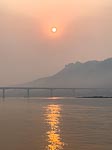


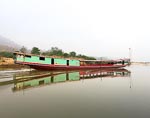



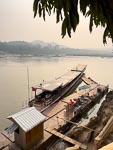
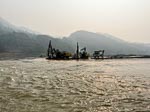


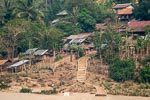
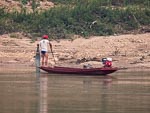
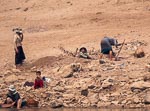
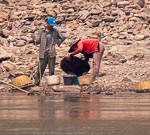
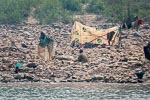

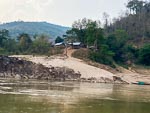
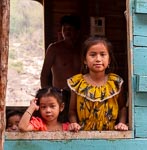
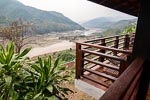

Around 5:30pm we stopped for our overnight rest at a village called Pakbeng, which translates literally as "mouth of the river Beng". A village of about 2000, accessible by road (a bit of a rarity along this river). We stayed at Sanctuary Pakbeng Lodge, a newish establishment, built progressively since 2000. A great position overlooking the river. A suprisingly civilized and pleasant place so deep into the "wilderness".